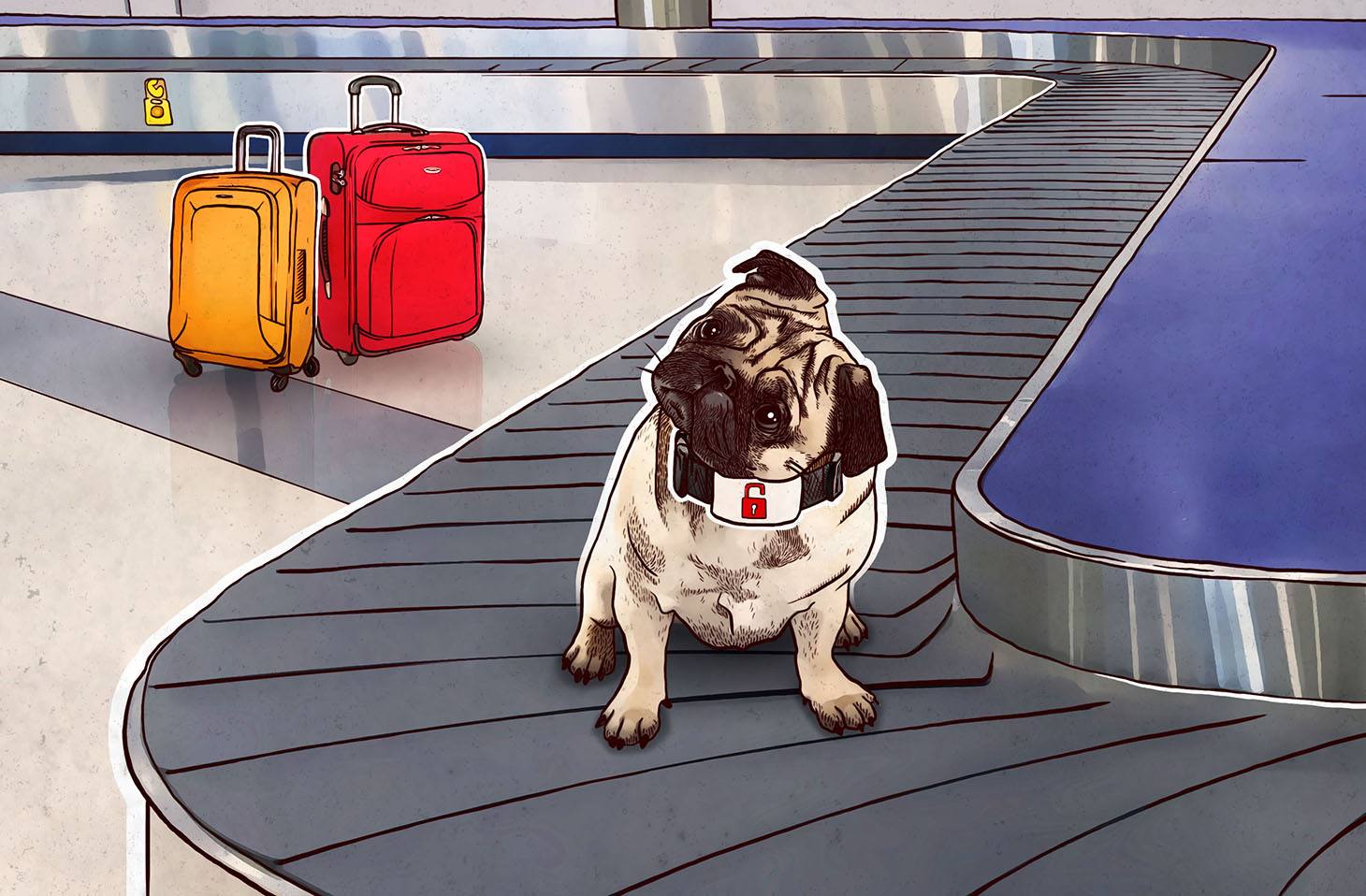According to the American Society for the Prevention of Cruelty to Animals, US animal shelters alone took in 3.3 million dogs last year. This rather startling number could be reduced if dogs stopped running away and getting lost.
Pets are among the things modern technologies, such as GPS trackers, can protect, so we took a look at how those trackers work. We tested seven trackers to that end — for a closer look, see Securelist’s post — but decided to expand the topic here and post about dog security in general.
Don‘t let the dog run away
- Get a good leash, one that’s sturdy, safe, and comfortable. When shopping for the accessory, you should consider not only the size of your dog but also the durability of the leash; even a small pet may turn out to be stronger than you thought and act out suddenly. A slippery metal chain is as likely to run away with your dog as it is to stop the pet from dashing off. And synthetic or braided leashes can cause serious burns. The most durable models — those made of nylon or leather — may not look as fashionable but are reliable and very practical. Especially restless pooches may even need a harness.
- Teach your pet to respond without hesitation to the essential commands Come here! and Sit! Other orders are up to you, but those two can save your dog’s life. They can be useful even when the animal is scared, in that a familiar behavior and the owner’s calm can help it overcome fear and keep it from running off.
- Remember: Dogs run away when they are scared. Most often, they are frightened by loud and sudden noises, such as fireworks, thunder, gun shots, and car horns honking. But their fear can be triggered by other animals, crowds, unfamiliar places, cars, and many other things. In situations that may scare your dog, hold on tight to the leash.
- Dogs also want to run away when they feel their predatory instincts. If you have a terrier or a hunting dog, keep them on a leash anywhere they could potentially take off after prey, such as in the country or in the presence of smaller animals.
- Even the calmest, most obedient dog becomes unmanageable when in heat. It may stop responding to commands and try to escape. To avoid problems, walk your dog on a short leash during these times or, if you don’t want any puppies, have it spayed or neutered.
- If you live in a house and let your pet out into the yard without a leash, do so only when you can keep an eye on it. If you are going on a trip, leave your pet at home with a sitter or at a pet hotel where it can be looked after by experienced handlers.
- Get your dog used to the car ahead of time. Anything can scare a dog that has never traveled in a car before — be it the sound of the engine, new smells, or the windshield wipers. It’s best to develop a special routine for car trips. Teach your pet to get in and out of the car using special commands — this will lower the likelihood of it running out into traffic. For increased security, keep your windows closed or buy your dog a special car seat.
- A dog can run away on its own, but it can also be stolen, so Animal Search UK recommends not leaving your dog anywhere you would not leave your child, such as alone in a locked car or at a store entrance.
- Animal Search UK also gives one other recommendation: If you use dog walkers or dog sitters, make sure to read the reviews of the people or companies that provide the service. Pick only those that you can find sufficient information on and make sure other people can confirm their positive experiences of working with them.
If it escapes anyway
- Make friends with your neighbors who have dogs and your neighbors in general. They’ll be able to recognize your furry friend and also get in touch with you to let you know where to look for it — or just walk it home for you.
- A dog collar must contain some minimal information about the animal, such as name and owner’s telephone number. It’s best to have this information engraved on a steel tag, clasp, or other surface, so the lettering won’t wear off and it’ll be easy to see. Don’t use your address though; it could be used by criminals. However, it’s a good idea to add the animal’s chip or pedigree ID number.
- Chip your pet. As opposed to the pedigree identifier, a chip may and should be implanted in all pets, including pedigreed and unpedigreed dogs, but also cats, ferrets, and other pets. The chip’s memory holds a unique 15-digit code that indicates a country code, manufacturer information, and information about the animal itself. To read this information, a specialized scanner is required that veterinary clinics and shelters, for example, usually have. They have access to the ANIMAL-ID unified database, where they can find the telephone number, address, and name of the animal’s owner.
- Use a GPS tracking device for your pet. With this device, there will be no need to wait for someone to contact you if they find your animal. You can track the whereabouts of your pet at any time. Many types of these devices are on the market, and they differ in terms of functionality and reliability. The latter is especially important — it affects device life span, of course, but it can also have an impact on your own and your pet’s safety. We tested seven tracking devices for pets and discovered significant differences in their security. Many tracking devices have vulnerabilities that could result in your animal getting lost or stolen and your personal data ending up in the wrong hands.
 tips
tips

